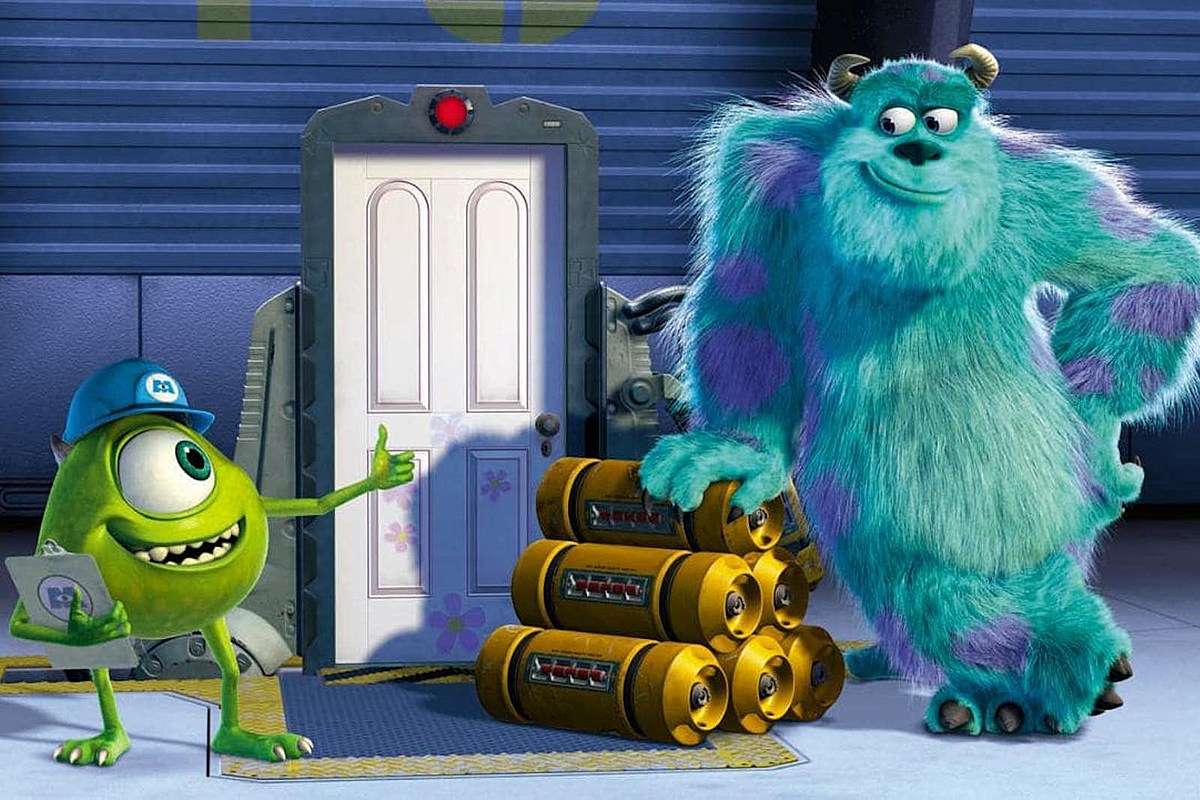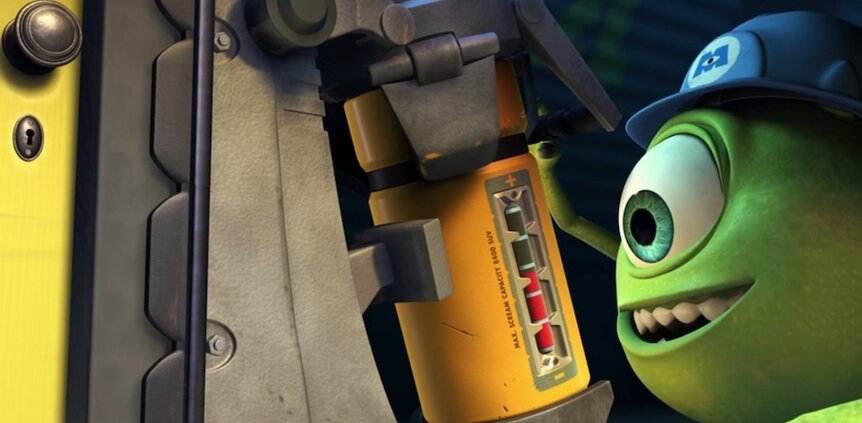Create a free profile to get unlimited access to exclusive videos, sweepstakes, and more!
The energy efficiency of fear and laughter: The science behind Monsters, Inc.
Their scientists are having a laugh.

The only thing more monstrous about the society portrayed in Monsters, Inc. than the characters themselves, is the terrifying energy generation strategies used by the titular power company. Children, the world over, are terrified in their beds in order to create consumable energy stores by harvesting their screams. Things take a turn for the worse when Mike and Sully (Billy Crystal and Joh Goodman, respectively) discover a plot by the company's CEO Henry J. Waternoose (James Coburn) kidnap children locking them into a scream extractor to forcibly drain them of their energy.
Things get better when it's discovered that laughter is a much better source of energy than screams. There are still some ethical questions about generating power and revenue through the unpaid labor of children, but we'll leave those for now in favor of the much more pressing question, one that we're thinking about now, 20 years after Monsters, Inc. premiered...
What would really be the more powerful energy source, laughter or screams?
BRAIN ACTIVITY
In order to determine which of the two sources, screaming our laughter, would be more energy efficient, we need to determine precisely how the energy is being generated and captured. The first possibility — though probably the least likely — is that the monsters are capturing the brain activity present when a child is afraid, or when they're experiencing joy.
Brains do generate energy via the electrical impulses sent along your neurons. In fact, your brain generates about 20 watts of energy when you're awake, enough to power a small lightbulb. So, using that activity to power a city isn't outside the realm of possibility, though it would be inefficient.
Now that we know there is useable energy present in the brain, the harvesters at Monsters, Inc. would need a way to capture it wirelessly from a distance. This part of the process is less clear. Wireless charging devices do exist, and you likely own one or know someone who does, but they often require that you work at very close distances. Still, let's suppose the scientists in the monster world worked out how to overcome this challenge. Human brains generate electricity and monsters know how to harvest it.
With that in mind, is there any reason one sort of brain activity should be preferred over any other? Probably not.
Several studies have been carried out looking at what brain regions are active during different emotional states. Over the course of a given day you use just about every part of your brain, and most of those regions are active at any given time. Experiencing an emotion can drive more blood flow to particular regions of the brain associated with that emotion, suggesting an increase in brain activity in those regions, but different activity doesn't necessarily equate to more activity.
Functional MRI scans and PET scans have isolated which regions are active when individuals are experiencing particular emotions. Happiness, which is the basic emotion most closely associated with laughter, involves the right frontal cortex, the precuneus, the left amygdala, and the left insula. Fear activates the bilateral amygdala, the hypothalamus and parts of the left frontal cortex.
The difference here is not necessarily in the amount of activity, but in the types of activity and the active regions. It might be possible that, for monsters, certain types of activity are better than others, but monsters don't publish papers so that remains the realm of speculation.
SOUND WAVES
The other option, and the one which makes more sense based on what we see on screen, is that monsters are capturing sound waves and converting them into electricity. Supposing this is the case, it makes sense that they'd have a preference for screams, at least at first glance.
Screams are alarm calls. They're typically loud, creating powerful sound waves meant to be heard at a distance. If you're converting human-generated sound into energy, screams make a certain amount of sense.
Sound is, of course, made up of waves travelling through a medium. When you get right down to it, it's just vibration and those vibrations could feasibly be converted into electricity using the right generator. In fact, research is ongoing to harvest energy from environmental noise.
Liew Hui Fang, et al. published a paper in the journal Energy Procedia, exploring the possibility of converting environmental noise into usable energy. Their findings show varying levels of energy generation based on sound level, measured in decibels, as well as frequency.
In each instance, higher decibels resulted in higher energy production. In terms of frequency, energy production peaked at about 70 Hz before falling off. This seems to suggest that loud, high-pitched sounds are ideal for generating electricity.
Screams can be quite loud, upward of 100 decibels, and anyone who has heard a child scream in fear or for want of a snack, knows them to be high in frequency. This makes screams good candidates for energy capture. Laughter on the other hand, is typically quieter (except for that one guy in the movie theater) and lower in frequency. The one thing laughter has going for it is that it can be sustained over a longer timeframe than screaming.
The unfortunate result for the residents of Monstropolis and children around the world, is that screams are very likely preferable to laughter in the energy generation department. The good news is, using sound for energy capture is inefficient no matter what the source.
According to MIT, sound energy generates about 1/100 of a watt per square meter. Solar energy generates 68,000 times as much over the same area. They could set up some solar panels and cut the kids out of the equation altogether.
Surely, a society capable of door-based teleportation could build renewable energy sources. Alternatively, have they tried rubbing Sully against the carpet and touching a doorknob?




























